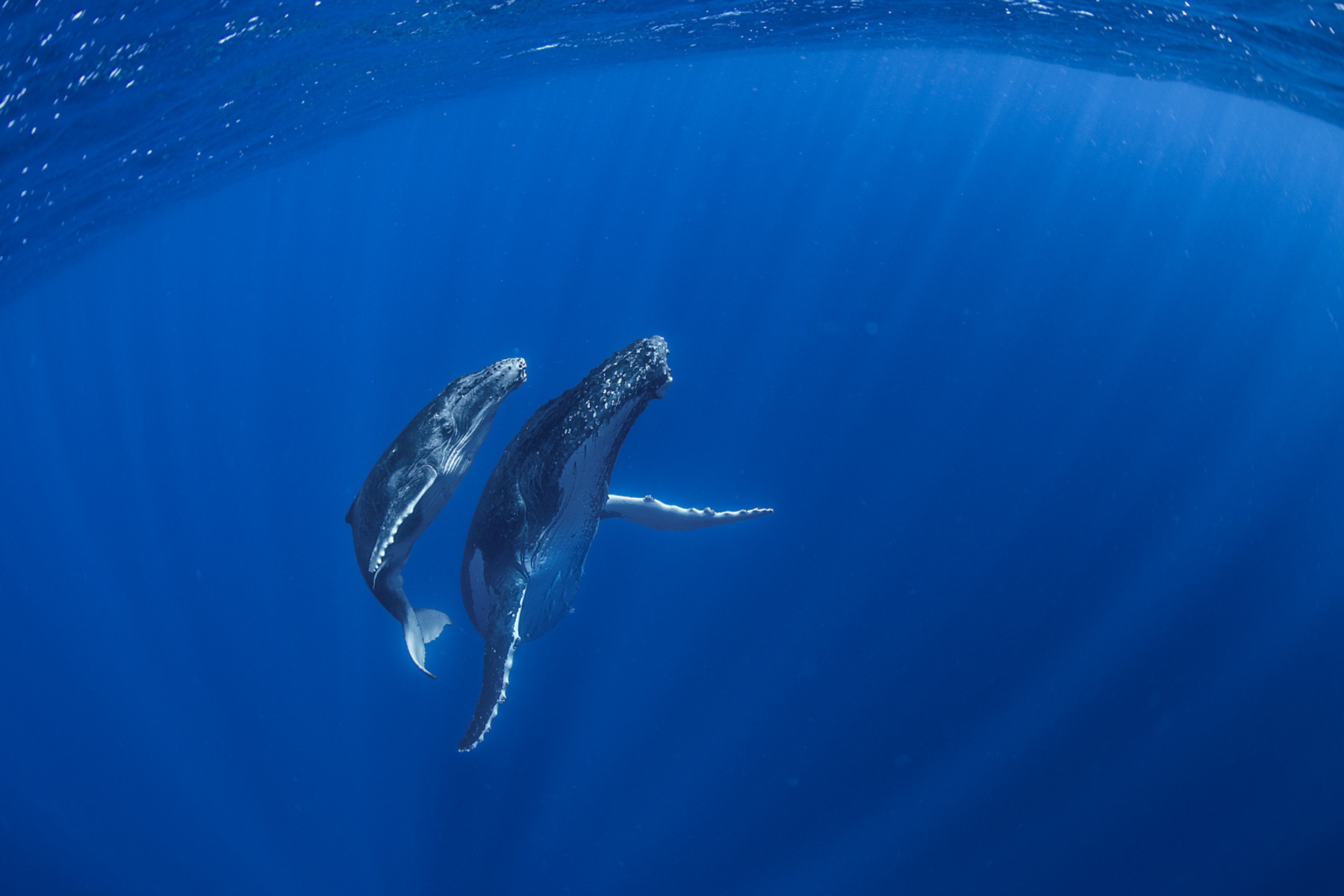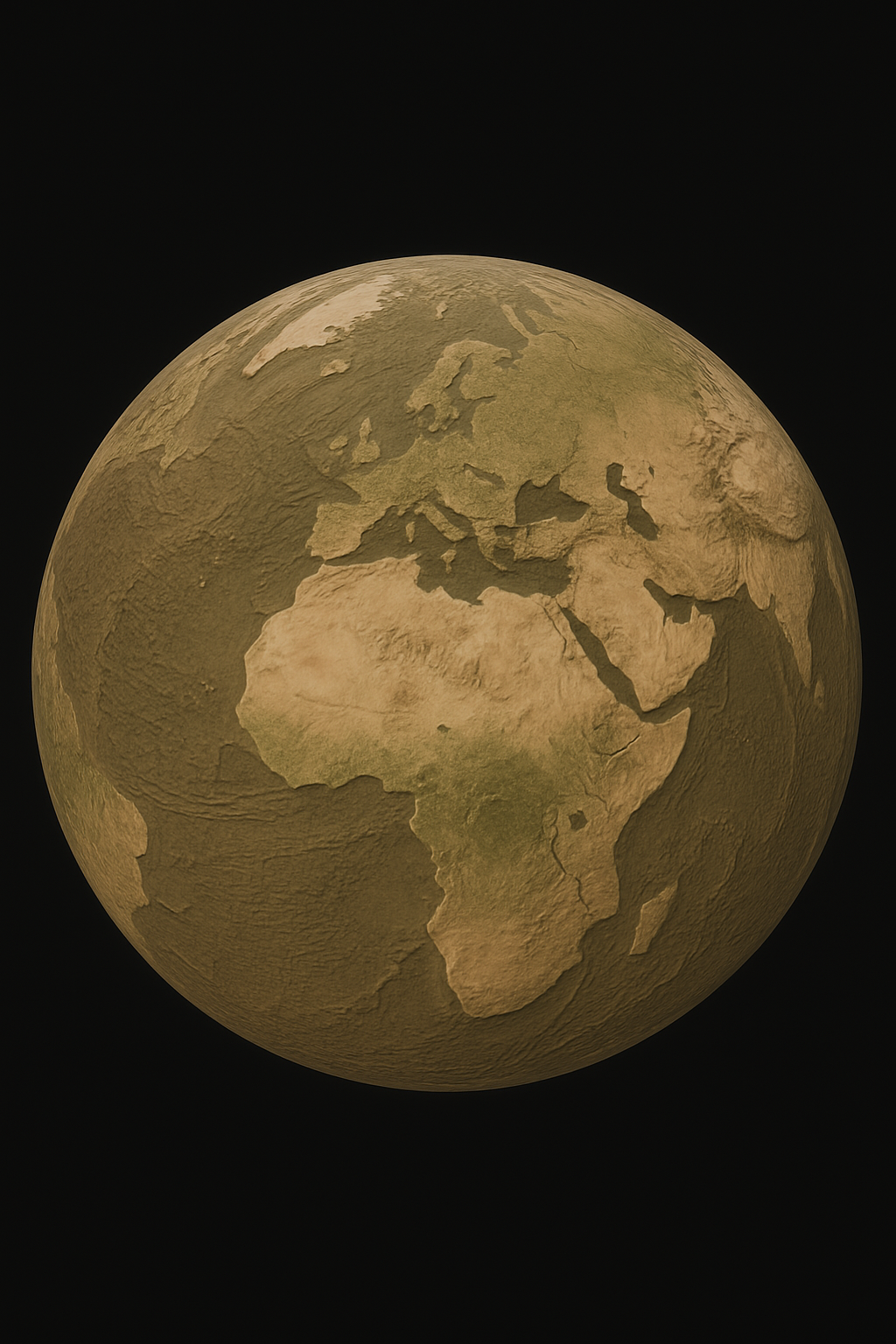
Water is one of the few essential sectors without a global capital stack.
Fact: Energy has oil markets. Tech has VC. Water — the most fundamental input to life and economy — still lacks coordinated early-stage capital or infrastructure buy-in.
A think tank creating a blended capital platform addressing systemic underinvestment in the world's most essential and overlooked resource — water
Date: September 13, 2025
https://the-water-foundation.org

Christoph Schwager
Chairman, The Water Foundation
Thank you for joining us today as we explore innovative approaches to global water security challenges.
We emphasize scalable solutions that build resilience, restore ecosystems, and expand water access globally.
www.waterfund.com
Water technology innovation requires unprecedented coordination across sectors, geographies, and stakeholder groups.
People lack safely managed drinking water
People lack safely managed sanitation
Annual shortfall in water infrastructure
Of wastewater flows back to ecosystem untreated
The core blind spot of humankind manifests in three critical dimensions
Water security remains absent from most global agendas, despite being fundamental to human survival
Less than 1% of climate capital flows to water solutions, creating a massive investment gap
No comprehensive global strategy exists for water security, leaving solutions fragmented and ineffective
We accept donations and employ best practices in blended finance for development and impact, enabling us to drive sustainable change through charitable initiatives and strategic partnerships.
We accept direct capital investments into closed-end venture and PE funds, as well as participate with our principals in an evergreen structure, creating opportunities for financial returns alongside impact.




Co-Founder & Director of Operations
Expert in operations and strategic development for water-related initiatives.
We exist to solve humanity's most overlooked crisis at a global turning point.
Our mission is to mobilize blended capital, science, and local leadership to restore global water resilience.
We aim to close the water capital gap by building vehicles, alliances, and trust systems for lasting change.
www.waterfund.com

Catalyze Innovation
Build Resilience
We are building an Institutional Grade set of Financial Instruments
Full alignment with financial, ESG, and cross-border regulatory standards.
Mission-locked governance and impact-first principles at every level.
Structured for compliance, protection, and transparency across jurisdictions.
ESG, SDG, Audited Financials, Accurate Forecasts, the works.
Multiple interconnected challenges prevent effective water security solutions
Local solutions struggle to address global challenges
Insufficient funding for critical water infrastructure
Innovation adoption hindered by market failures
Disconnected policies undermine coordinated action
Water stress is escalating globally, with critical implications for human security and economic stability.
Experience severe water scarcity at least one month per year
Gap between water demand and sustainable supply by 2030
Of all natural disasters are water-related

Water stress is intensifying tensions across fragile regions and borders.
Disputes over water are growing in South Asia, Africa, and the Middle East.
Nations are contesting dwindling supplies, risking broader geopolitical instability.
Water scarcity now endangers not just communities, but peace between nations.
We're building a systemic correction mechanism, not just a fund....
A multi-layered structure realigning capital with the water system
Deploy solutions with proven impact readiness
Ensure governance supports long-term capital flow.
Activate capital layers from grants to private equity
Think outside the box with our unconventional water insights

Fact: Energy has oil markets. Tech has VC. Water — the most fundamental input to life and economy — still lacks coordinated early-stage capital or infrastructure buy-in.

Fact: As scarcity accelerates, access to water technology, treatment IP, and resilient supply chains will become a geopolitical asset class.

Fact: From hydrogen to battery production, green steel to data centres — the entire climate transition is water-intensive.

Fact: Insurance losses from water-related events now outpace fire and wind in many markets.

Fact: You can replace fossil fuels. You can switch food crops. But there is no substitute for water.

Fact: Water systems are shovel-ready, commercially viable, and universally needed. The pipeline exists — the capital doesn’t.

Fact: Water is a $800B+ global sector, but most businesses are small, public, or undercapitalised.

Fact: From Nile Basin politics to Himalayan meltwater to Gulf desalination — next-gen geopolitics will be blue, not black (oil).

Fact: While tech chases the next break, investing in water means building what’s unbreakable.

Fact: As risk, regulation, and need converge, the first $10B watertech company will emerge — and smart capital will be there early.

Fact: The World Bank and United Nations have both warned that water insecurity can act as a ‘threat multiplier’ — escalating tensions over migration, agriculture, and borders, particularly in already vulnerable regions.

Fact: In regions like the Andes, Himalayas, and Alps, glacier melt has increased river flows — but once glaciers vanish, long-term water availability drops sharply.

Fact: Properly treated wastewater can supply water, recover nutrients, and even generate energy — making it a circular economy powerhouse.

Fact: Water-sharing treaties, such as the Indus Waters Treaty between India and Pakistan, have remained intact even during periods of military conflict.

Fact: In some regions, more people have access to smartphones than to safely managed drinking water or sanitation.

Fact: Women collecting water face increased risk of harassment and violence, particularly in displaced or conflict-affected settings.

Fact: Over 60% of rainfall is lost to runoff, evaporation, or immediate use — making rainwater harvesting and recharge critical in water-scarce zones.

Fact: Nitrate, arsenic, and pharmaceutical contamination are widespread, yet largely undetectable without lab testing — even in “treated” water.

Fact: While dams generate power and store water, they also disrupt ecosystems, displace millions, and reduce downstream flow — sometimes exacerbating scarcity.

Fact: Despite its essential nature, water isn’t priced in any coordinated global system — yet water rights are now traded on futures markets (e.g., California’s Nasdaq Veles Index).

Fact: Up to 60% of irrigation water is lost due to inefficient methods like flood irrigation. Precision agriculture adoption remains low in most regions.

Fact: Diarrheal diseases caused by contaminated water kill around 485,000 people annually, many of them children.

Fact: The UN formally recognised access to clean water and sanitation as a human right in 2010, but billions still lack basic access.

Fact: A litre of water weighs ~1 kg, while a litre of crude oil weighs ~0.8–0.9 kg. Bottled water is frequently more expensive than petrol in many regions.

Fact: Informal urban residents can pay 10–50 times more per litre than wealthier residents connected to public systems.

Fact: Countries like India and Brazil have abundant freshwater resources but suffer from severe water stress due to mismanagement and pollution.

Fact: Centralised urban systems can collapse rapidly under stress, as shown by Cape Town’s “Day Zero” crisis.

Fact: Countries “export” billions of litres of virtual water via food, clothing, and industrial goods.

Fact: The average American uses over 300 litres/day; the average German, just ~120 litres.

Fact: Up to 15% of electricity in some countries is used to extract, treat, and pump water.

Fact: Treated water may still contain PFAS, microplastics, or resistant bacteria not yet fully regulated.

Fact: Over 300 million people depend on desalinated water, but it is energy-intensive and produces toxic brine.

Fact: Most watertech patents come from Europe and North America, while the greatest need is in South Asia, Africa, and the MENA region.

Fact: Cities lose up to 30% of treated water through leaks. Globally, 346 million m³/day is lost — enough for 200 million people.

Fact: Unsafe water and poor sanitation cause more deaths annually than war, terrorism, and homicide combined.

Fact: Informal urban residents can pay 10–50 times more per litre than wealthier residents connected to public systems.

Fact: Many regions face water scarcity not due to lack of water, but because of poor management, infrastructure, and governance of water resources.

Fact: Urban areas with centralized water systems can face catastrophic water shortages when infrastructure fails or drought strikes, as seen in Cape Town’s “Day Zero” crisis.

Fact: The majority of water trade happens invisibly through the exchange of water-intensive goods like food, clothing, and electronics, rather than through direct water transfers.

Fact: Wealthier nations consume significantly more water per capita than developing countries, with the United States using nearly twice as much water per person as Germany.

Fact: 15% of total energy in developing countries is used for water systems, from extraction to treatment and distribution.

Fact: Even clear, treated water can contain invisible contaminants like PFAS, microplastics, and antibiotic-resistant bacteria that aren’t always removed by standard treatment.

Fact: While desalination provides fresh water to millions, it’s energy-intensive and produces concentrated brine that can harm marine ecosystems if not properly managed.

Fact: The majority of water technology patents are filed in water-rich developed nations, while water-scarce regions often lack access to these innovations.

Fact: An estimated 45 million cubic meters of water are lost daily through leaks in water distribution systems worldwide — enough to serve nearly 200 million people.

Fact: Waterborne disease deaths (~800,000/year) exceed the combined annual deaths from war, homicide, and terrorism worldwide.

Fact: Textile dyeing is the second-largest polluter of water globally, and a single pair of jeans can require 7,500 litres of water to produce.

Fact: Floods, droughts, and storms make up the vast majority of climate-related disasters worldwide, affecting billions and causing trillions in damages.

Fact: 21 of the world’s 37 largest aquifers are being depleted faster than they can be replenished, with some already reaching critical stress levels.

Fact: Water-scarce countries like the UAE and Saudi Arabia import electricity and fuels to reduce the need for local water-intensive power generation, effectively ‘importing’ water in the form of energy.

Fact: Before the early 20th century, cholera and typhoid outbreaks were common in cities across Europe and North America due to untreated water. The introduction of chlorination in the early 1900s dramatically improved public health.

Fact: Each year, the world wastes 1.3 billion tonnes of food, which equals 250 cubic kilometres of water — more than the annual flow of the Volga River, Europe’s largest river by discharge.

Fact: Several Roman aqueducts and water systems (e.g., Pont du Gard in France) still function or have inspired modern systems over 2,000 years later, showcasing the engineering prowess of ancient Rome.

Fact: Bottled water has overtaken carbonated soft drinks in many markets and is projected to reach $500 billion in value by 2030, making it one of the fastest-growing beverage categories worldwide.

Fact: Climate change and melting ice caps are redistributing salinity in the oceans, creating new water-related climate feedback loops that could impact global weather patterns and marine ecosystems.
The convergence of crisis and opportunity in the world's most critical resource
from unsafe water & sanitation
die annually from water-related diseases
could be saved with safe water access
Every moment we delay, lives are lost. The time to act is now.
Join us in our mission to address the global water crisis
We invite mission-aligned capital to join us at this pivotal moment.
Strategic allocation across nonprofit think tank, venture, and private equity fund layers with full transparency.
"This is exactly the model the water sector needs."
Global Investor
"TWF aligns capital and justice in a way we've never seen."
Policy Expert
Join us in creating systemic change for global water security
| First Principle | Strategic Response | Donor Example | Investor Example |
|---|---|---|---|
| 1. Water is essential — but mispriced. | Align capital with access and risk. | Fund women-led kiosks for clean water access in underserved regions. | Invest in a digital water rights platform scaling across LATAM. |
| 2. Resilience is the true return. | Build for long-term, systemic stability. | Core support for water-health-data systems across rural zones. | Growth equity in climate-smart irrigation with cross-border reach. |
| 3. Complexity is the alpha. | Step in where others hesitate. | De-risk blended municipal water reuse pilots in India. | Structure SPV for desalination plant in MENA with ESG premiums. |
| 4. Tech must meet governance. | Fund tech + policy + community capacity. | Grants for soil-water-tech agroforestry in climate-hit Sahel. | Hybrid investment in leak detection SaaS + retrofitting ops. |
| 5. Value compounds across sectors. | Track and multiply co-benefits. | Cross-sector school WASH programs embedded in gender equity. | Carbon + biodiversity credits via blue-carbon mangrove assets. |
We're not just another accelerator or fund - we're the bridge between innovation and scale
From catalytic seed to patient PE, we work across the entire capital spectrum. We don't just fund - we build sustainable financial pathways.
We support people, places, and policy ecosystems that turn belief into practice. It's not just about the technology - it's about the entire ecosystem.
Unlike traditional accelerators, we focus on scalable, bankable infrastructure. We build what lasts, not what's trendy.
Water is not only the world's most vital resource - it's also the one where capital can affect the most change.
It hasn't been effectively priced into our financial systems yet. Water is set to become the most capitalized asset class amongst natural resources. Investing in water also has the highest impact multiple amongst natural resources.
It's the last big scarcity play.
Preventable deaths each year from diarrhoeal disease linked to unsafe water, sanitation, and hygiene (WHO/UNICEF JMP, 2023)
Highest burden, with unsafe water contributing to approximately 5% of all deaths — around 500,000 preventable deaths annually (WHO Africa, 2023)
Nearly 700,000 premature deaths annually due to poor water, sanitation, and hygiene (WHO Global Health Estimates, 2022)
Around 200,000 preventable deaths each year related to unsafe water and inadequate sanitation (WHO/UNICEF JMP, 2023)
Approximately 150,000 preventable deaths annually, with fragile and conflict-affected states carrying the highest burden (UNICEF MENA, 2023)
Around 100,000 preventable deaths annually, disproportionately affecting poor and rural populations (PAHO/WHO, 2022)
Lower but still significant, with about 80,000 preventable deaths annually due to inadequate WASH services (WHO/UNICEF JMP, 2023)
Over 2 million preventable deaths annually across all regions. The crisis knows no borders.
Water is quickly becoming the world's most critical resource...
The window for action is rapidly closing. Every day of delay compounds the crisis.
Three integrated approaches to water innovation investment
We identify the best water IP/ideas, build teams around it, enable them with capital
We invest in the best existing teams and technologies, plug them into the venture ecosystem and help them scale
We buy incumbent players and hidden champions along the water cycle and build something even bigger